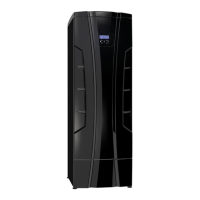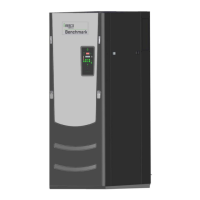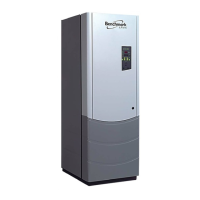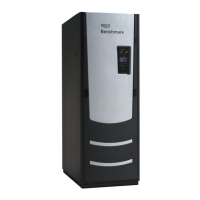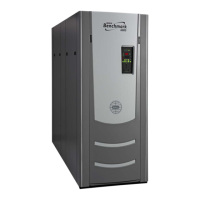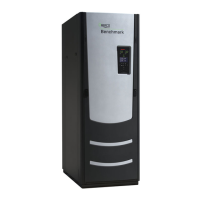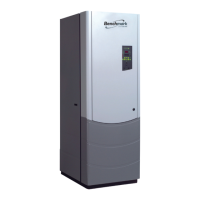Page 9 of 30 AERCO International, Inc. • 100 Oritani Dr. • Blauvelt, New York 10913 • Phone: 800-526-0288 PR1 04/08/2014
Application Guide
low lying pipework is fully drained. Opening all bleed valves ensures the system will be
completely emptied.
• A reliable test to determine if a system is clean is if the Total Dissolved Solids (TDS) of the water
being drained is within 10% of the make-up water TDS. This indicates that sufficient
contamination has been flushed from the system. If the difference in TDS is more than 10%, it is
recommended to repeat the cleaning process until that is achieved. A turbidity test can be used
as an alternate way to determine if a system is clean.
• For boiler retrofit/replacement installation, it will be necessary to repeat the cleaning process until
the draining water appears to be clear. Once clear, the above TDS comparison (or a turbidity test)
should be performed.
• If a flushing machine is used in the cleaning process, carefully follow the manufacturer’s
instructions. If the flushing machine is designed to flush individual zones, the TDS comparison
must be made between each zone and the make-up water, or the turbidity test performed for each
zone.
• Add corrosion and scale inhibitor after the system has been declared clean, using the appropriate
amount recommended by the manufacturer. Introduce the protector/scale inhibitor to the system
following the chemical treatment manufacturer’s instructions. Adding inhibitor to a dirty system
reduces its effectiveness.
When refilling the system, ensure the boiler is not air-bound by opening the pressure-relief valve
located at the rear of the boiler. Leave the relief valve open until a steady flow of water is observed.
Close the valve and finish filling the system.
Water Quality Maintenance and Boiler Warranty 2.3.2.
Heat exchanger failures due to improperly cleaned/treated and poorly maintained water are not
covered under warranty. Scheduled system/boiler water maintenance is required to maintain the heat
exchanger warranty. AERCO shall reserve the right to require maintenance records when evaluating
warranty claims.
Water Treatment Analysis and Scheduling 2.3.3.
The proper mixture of water, chemical treatment, and glycol (if used) should be ascertained based on
a sample of the system water and the make-up water. Your local water treatment company, or one of
the manufacturers listed below, may analyze your sample. Adjust the chemical composition of your
system water based on the analysis. After this initial analysis, the chemical composition of your
system water should be tested at the beginning of each heating season. For boilers operating year
round, this analysis should be made at least twice a year.
Boiler Loop Design Guidelines 2.3.4.
For proper and safe operation of the water tube AM boiler, the primary (boiler) loop piping and the
associated fittings and accessories must be designed/selected as discussed in the following sections.
Table 1 shows the required minimum flow rates at various system designed temperature rises. Also
shown are pressure drops through strainers typically needed in the boiler loop (see paragraph 4.2 for
strainer requirement details).
The following primary/secondary piping design guidelines should be used for AM Series installations.
The data was calculated based upon systems with Return Water Temperatures above 80°F. A 20
mesh strainer (or finer) is required at each boiler inlet. Water flow rates and pressure drops shown
below are for the boiler loop. Boiler water flow rates vary with system design parameters. The boiler
loop fittings and strainer pressure drops shown below are examples only – actual pressure
drops will vary depending on actual piping layout and strainer size/type used.
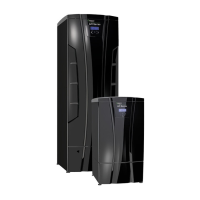
